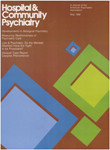Cost-Benefit Analysis of a Behavioral Program for Geriatric Inpatients
Abstract
A behaviorally oriented treatment program was developed for geriatric patients at a state psychiatric hospital, in an attempt to demonstrate that active treatment for the elderly can be both socially beneficial and economically wise. Outcome data indicated that the program was successful in decreasing the average length of hospital stay, decreasing the percentage of patients discharged to more dependent living settings than those from which they were admitted, and increasing placements to independent living settings. An economic analysis demonstrated benefit-to-cost ratios of between ten and 20 to one, depending on assumptions used. The authors believe the ratios were especially encouraging as they were calculated using conservative assumptions.
Access content
To read the fulltext, please use one of the options below to sign in or purchase access.- Personal login
- Institutional Login
- Sign in via OpenAthens
- Register for access
-
Please login/register if you wish to pair your device and check access availability.
Not a subscriber?
PsychiatryOnline subscription options offer access to the DSM-5 library, books, journals, CME, and patient resources. This all-in-one virtual library provides psychiatrists and mental health professionals with key resources for diagnosis, treatment, research, and professional development.
Need more help? PsychiatryOnline Customer Service may be reached by emailing [email protected] or by calling 800-368-5777 (in the U.S.) or 703-907-7322 (outside the U.S.).



